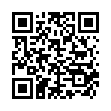|
This article is cited in 2 scientific papers (total in 2 papers)
Artificial Intelligence, Knowledge and Data Engineering
Analytical review of automatic systems for depression detection by speech
A. Velichko, A. Karpov
SPC RAS
Abstract:
In recent years the interest in automatic depression detection has grown within medical and scientific-technical communities. Depression is one of the most widespread mental illnesses that affects human life. In this review we present and analyze the latest researches devoted to depression detection. Basic notions related to the definition of depression were specified, the review includes both unimodal and multimodal corpora containing records of informants diagnosed with depression and control groups of non-depressed people.
Theoretical and practical researches which present automated systems for depression detection were reviewed. The last ones include unimodal as well as multimodal systems. A part of reviewed systems addresses the challenge of regressive classification predicting the degree of depression severity (non-depressed, mild, moderate and severe), and another part solves a problem of binary classification predicting the presence of depression (if a person is depressed or not). An original classification of methods for computing of informative features for three communicative modalities (audio, video, text information) is presented. New methods for depression detection in every modality and all modalities in total are defined. The most popular methods for depression detection in reviewed studies are neural networks. The survey has shown that the main features of depression are psychomotor retardation that affects all communicative modalities and strong correlation with affective values of valency, activation and domination, also there has been observed an inverse correlation between depression and aggression. Discovered correlations confirm interrelation of affective disorders and human emotional states. The trend observed in many reviewed papers is that combining modalities improves the results of depression detection systems.
Keywords:
automatic depression detection by speech, computational paralinguistics, speech technologies, machine learning.
Citation:
A. Velichko, A. Karpov, “Analytical review of automatic systems for depression detection by speech”, Informatics and Automation, 20:3 (2021), 497–529
Linking options:
https://www.mathnet.ru/eng/trspy1151 https://www.mathnet.ru/eng/trspy/v20/i3/p497
|

| Statistics & downloads: |
| Abstract page: | 205 | | Full-text PDF : | 339 |
|




 Contact us:
Contact us: Terms of Use
Terms of Use
 Registration to the website
Registration to the website Logotypes
Logotypes







 Citation in format
Citation in format 
